Why is long division so hard?
There is something about division in general which just intimidates a lot of kids (and adults!). Then you throw in the “formal written method” of long division and it‘s enough to put the strongest of mathematicians to the test. The method is lengthy and requires a fair amount of prep and this tends to cause a lot of children to give up before they have even begun. It is also slightly different to the methods most adults were taught and so helping with homework can sometimes just reinforce the belief that it is a difficult method.
In reality, long division doesn’t have to be intimidating. I have put together a 5 Day Long Division Challenge to master this formal written method in 5 easy to follow steps. Maths is one of those subjects that can incite fear and once doubt has crept in, the mind is great at stopping us from persevering. Maths requires resilience. Resilience is built from experiencing tricky methods, having a go anyway and experiencing some form of success.
With access to the right methods and having enough time to practice, even long division can be something that our children can face with confidence. Read on for my essentials in smashing long division once and for all.
Learning tables helps long division
Learning times table facts is key for so many reasons. Long division is a great example. The only way to get good at learning tables is practice, practice and more practice. And once tables are secure, they still need more practice! In fact, if division is learned at the same time as times-tables, it makes life so much easier.

At first, many children learn their tables by counting up…. 3,6,9,12 etc….but for tables to be secure they need to be able to recall: 3 x 6 = 18 without the counting up. At the same time as remembering this fact, they should also be learning that 6 x 3 = 18 and that 18 ÷ 6 = 3 and 18 ÷ 3 = 6. I have used many was to reinforce this….. arrays, triangles, even flowers.
Try them all out….find what works for your child. Just understanding this concept is so helpful for all future maths, including when they get up to secondary school and use the same concept with time, distance, speed formulas. Trust me, it’s useful!
Understand the terminology in long division
Maths has a lot of words involved and these can get overlooked but honestly, using the correct words not only helps your child to understand concepts but also separates the children who really understand from the children who remember a method temporarily. Greater depth usually involves an ability to explain and reason and use of maths vocabulary is key to this. Some useful words to learn and understand related to long division are: dividend, divisor, quotient, remainder.
I have lost count of children who get confused between which number goes outside of the bus stop and which times table we are using. Having a secure understanding of which number is the divisor and dividend is so important. As an example, with 832 ÷ 8, 832 is the dividend and goes inside the bus stop. 8 is the divisor and goes outside the bus stop. The divisor is the times table we are using. Children can sometimes get to the first step and instead of seeing that we are doing 2÷8 and so it should be a 0, they will do 8÷2 and put 4 above.

Bus stop method- the basics of long division
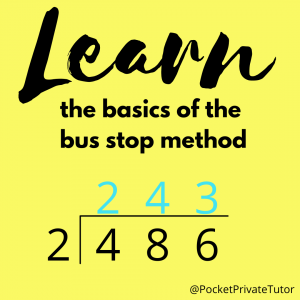
Once children understand the role of each number in a division, we can transfer this to the good old bus stop method. Short division is where the divisor is a times table that children are expected to be able to recall mentally. So for anyone in Year 4 and above that is all the facts up to 12 x 12. They learn how to set the calculation out, and then the steps to finding the answer which sits above.
The method gets more complicated when there are remainders and then again when remainders might need to interpreted for context.
For example:

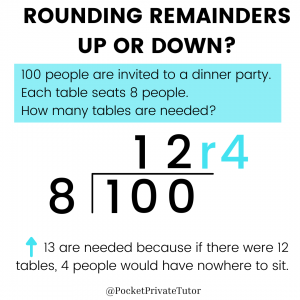
Learn some tricks- related facts that will help long division
 Day 2 of my long division challenge teaches a simple tip for how to simplify a long division method so that it is broken down into 2 short division calculations. Understanding multiples and factors is key to being able to use this short cut method but it does also require the divisor to be a composite number (not a prime). This method won’t work with divisors that are prime numbers (only has itself and 1 as a factor) and there WILL be at least one of those as a question in Paper 1 of the SATs.
Day 2 of my long division challenge teaches a simple tip for how to simplify a long division method so that it is broken down into 2 short division calculations. Understanding multiples and factors is key to being able to use this short cut method but it does also require the divisor to be a composite number (not a prime). This method won’t work with divisors that are prime numbers (only has itself and 1 as a factor) and there WILL be at least one of those as a question in Paper 1 of the SATs.
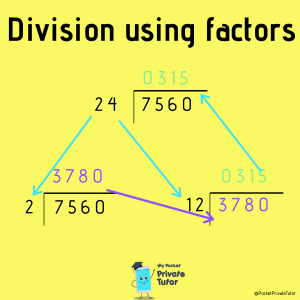
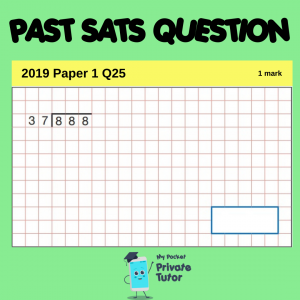
The long division method is complicated- preparation is key
The formal written method of long division is complex and has many steps. This is often what puts children off. Patience is needed and lots of practice because it is a very effective way of ensuring accuracy with their answers. Many schools are now introducing the long division method when short division could be used because it is giving our children more time to get comfortable with the method. Long division should be used when the divisor is a times table that children are not expected to recall mentally: 13 for example or 25. It involves writing out the times-tables facts first (a maths skill in itself and Day 4 of my long div challenge) and then rather than writing the remainder next to the following digit in the bus stop, we subtract it and bring that following digit down.
I love this song to help remember the steps of long division. I have had some eye rolls when I have introduced it but when the kids can’t get it out their heads and are telling me that they hear the steps when they do a long division, I think “job done!”.
The old method of writing the remainder next to the next digit is all well and good but leaves children vulnerable to mistakes with subtracting in their head and forgetting what they are doing next. They have to hold on to too many numbers in their head. The current formal written method may take longer but everything is written down, it is really effective at maintaining accuracy. Plus method marks are awarded if they show this complete method in their working out.
Practice makes perfect
The honest truth is that this method takes practice. Even after understanding it, it needs to be regularly revisited. I can help your child understand the formal written method in my 5 day Long Division Challenge. I break the complex method down into 5 manageable steps. Often with long division issues, it’s not the actual method that is the problem but the listing of multiples that is the barrier. This short course allows your child to focus on each step separately and only move onto the final step when they are ready.
It builds confidence steadily so that the method is secure and not just remembered for the coupe of lessons that they are learning it.

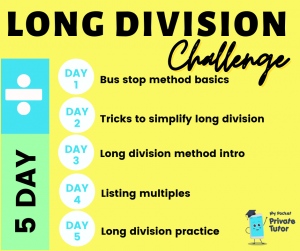
Of course after mastering this method, there are remainders to deal with. But that is another blog and another post! They will be expected in Year 6 to express remainders as fractions and as decimals. If your child is ready to learn all about this I have quite a few lessons dedicated to this on my SATs revision app. See the images below.
The app is available to download completely free on Apple and Google Play with 6 lessons to try out and then just £9.99 per month to access all of the other lessons covering the complete Year 6 National Curriculum.
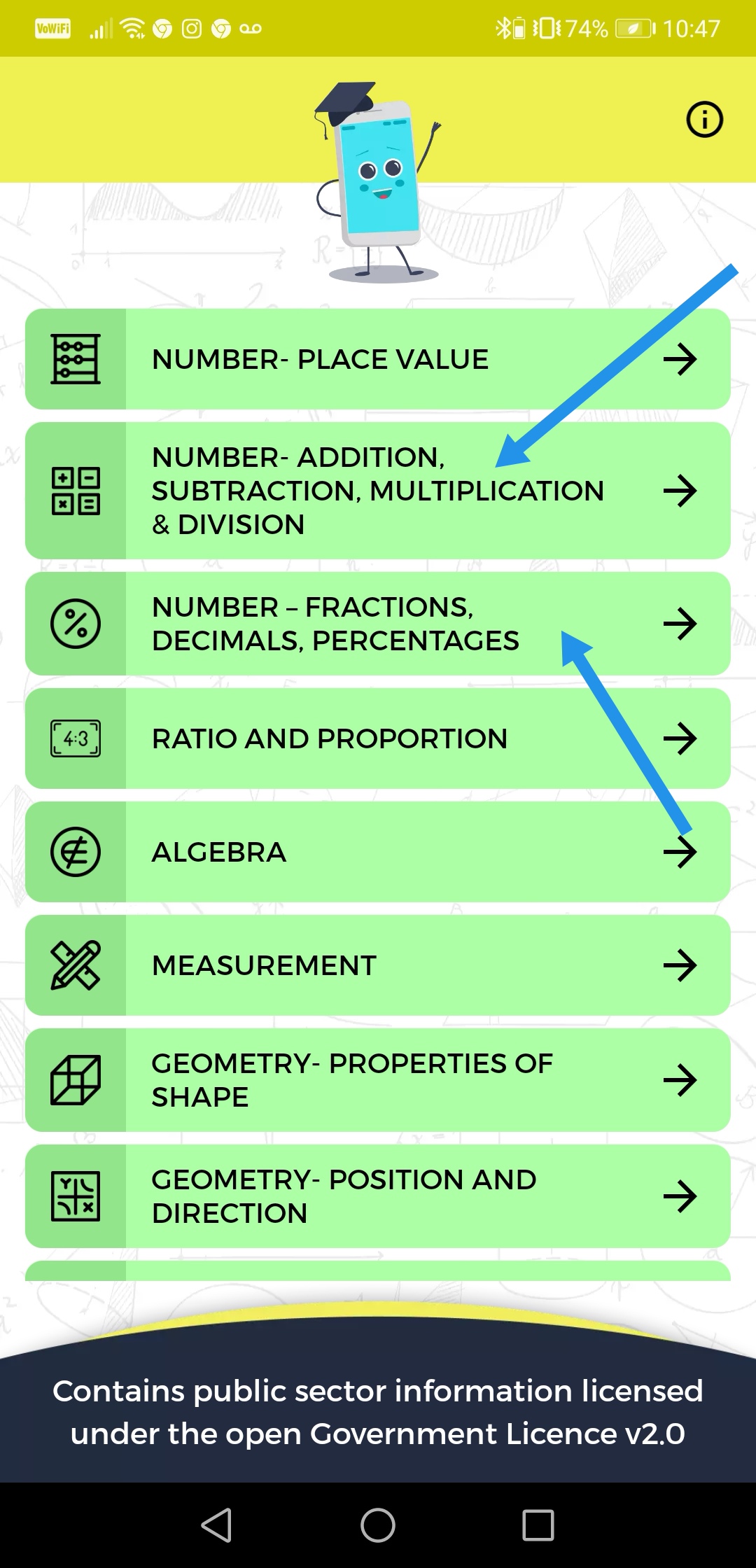
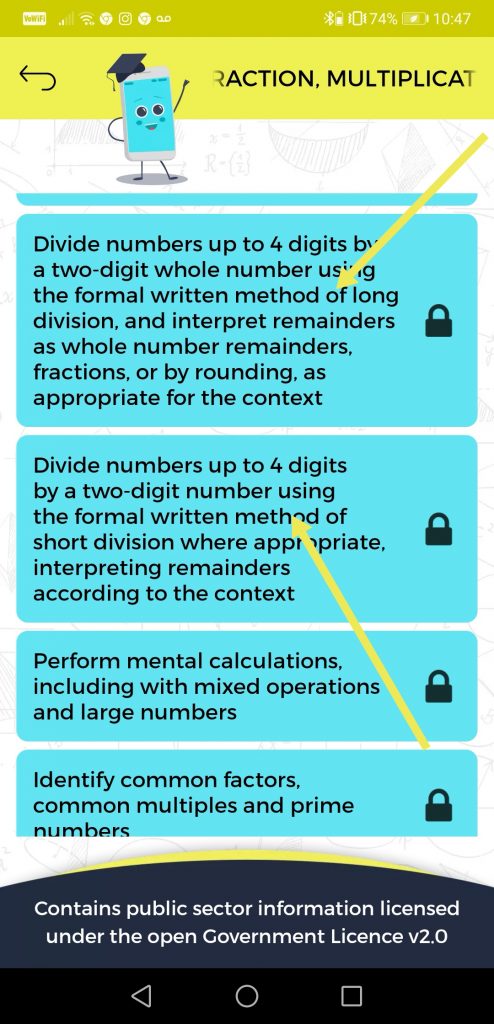
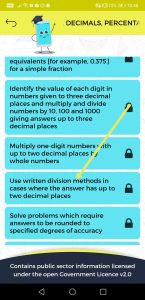
But for now, give my challenge a go, learn the skills of Long Division in just 5 days! I would love to hear your feedback!
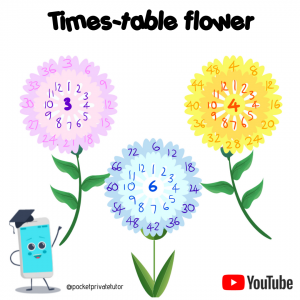
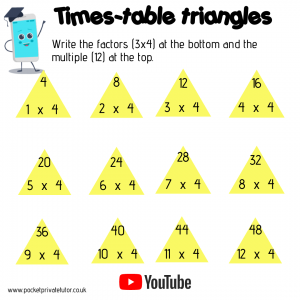





Leave a comment
Sign in to post your comment or sign-up if you don't have any account.